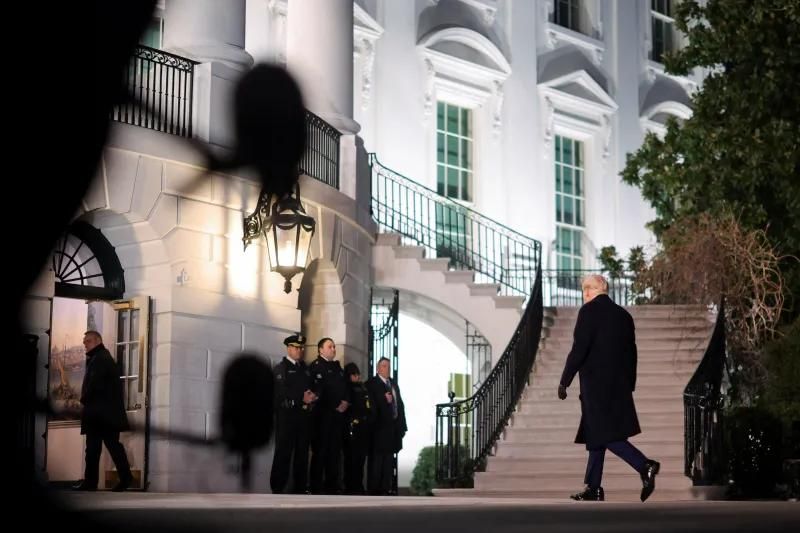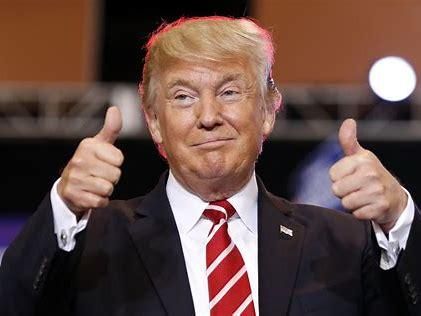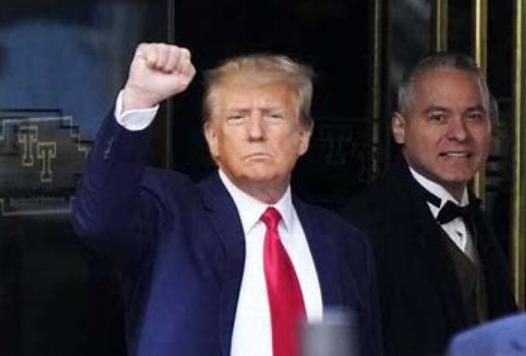By Eric Vandenbroeck and co-workers
The Price of Trump’s Power Politics
Pax Americana is
gone. Born with the Japanese attack on Pearl Harbor on December 7, 1941, the U.S.-led
international rules-based order died with the second inauguration of Donald J.
Trump. The president has long maintained that this order disadvantages the
United States by saddling it with the burden of policing the globe and enabling
its allies to play it for a sucker. “The postwar global order is not just
obsolete,” Secretary of State Marco Rubio declared in his Senate confirmation
hearing. “It is now a weapon being used against us.”
Trump’s skepticism
about U.S. support for Ukraine and Taiwan, his eagerness to impose tariffs, and
his threats to retake the Panama Canal, absorb Canada, and acquire Greenland
make it clear that he envisions a return to nineteenth-century power politics and
spheres of interest, even if he does not frame his foreign policy in those
terms. In that era, the great powers of the day sought to divide the world into
regions that each would dominate, regardless of the desires of those who lived
there—a vision of the world that Trump explicitly echoes. Trump sees few
significant U.S. interests outside the Western Hemisphere, considers alliances
to be a drain on the U.S. Treasury, and believes the United States should
dominate its neighborhood. His is a Thucydidean worldview—one in which “the
strong do what they can and the weak suffer what they must.”
Although the era of
Pax Americana produced extraordinary achievements—the deterrence of communism,
unprecedented global prosperity, and relative peace—it also planted the seeds
of its destruction well before Trump’s ascent. American hubris had led to costly,
humiliating wars in Afghanistan and Iraq, and the 2008–9 financial crisis
shattered faith in the U.S. government’s competence and policy prescriptions.
One can understand why some Americans might feel their country would fare
better in a different, might-makes-right world. The United States would seem to
bring a strong hand to such an order—it commands the world’s largest economy,
its most capable military, and arguably its strongest geographic position.
But it has a
profoundly underrated disadvantage: lack of practice. Naked power politics is
alien terrain for the United States, but it is familiar territory to its
current rivals. Chinese President Xi Jinping and Russian President Vladimir
Putin have long resented Pax Americana because it limited their geopolitical
ambitions. They have learned to work together to counter U.S. influence,
especially in the global South. And unlike Trump, they do not face internal
checks and balances on their power. They could overplay their hands and
generate a backlash to their revisionist ambitions. But if they do not, Trump’s
gamble could easily go awry, leaving Americans, and the rest of the world, less
prosperous and less secure.

Domination Over Diplomacy
As anomalous as
Trump’s rhetoric can sound to ears conditioned by decades of bipartisan talk of
the United States as the leader of the free world, his foreign-policy vision—of
expanding U.S. influence in its immediate neighborhood while backing out of global
leadership—draws from older American impulses. In 1823, President James Monroe
famously declared the Western Hemisphere off-limits to further European
colonization. By the end of the nineteenth century, presidents would use
Monroe’s proclamation to justify U.S. territorial expansion. In 1977, the
United States agreed to relinquish control of the Panama Canal only in the face
of rising anti-Americanism in Latin America and over the staunch opposition of
Americans who believed, as one U.S. senator put it, that “we stole it fair and
square.”
Indeed, Trump’s
coveting of Canada and Greenland also have roots in U.S. history. The founding
American generation harbored dreams of absorbing Canada; writing at the start
of the War of 1812, fought between the United States and the United Kingdom,
former President Thomas Jefferson declared that “the acquisition of Canada this
year . . . will be a mere matter of marching.” Such a desire persisted in cries
of “54-40 or fight” in the 1840s, a reference to the latitude of the southern
border of what was then Russian-owned Alaskan territory and to an appeal to
seize a large swath of Canada’s Pacific Northwest. President James Polk only
set aside this ambition in 1846 in favor of the current U.S.-Canadian border
because he was reluctant to confront a more powerful United Kingdom over a
distant and largely uninhabited territory as war with Mexico loomed. President
Andrew Johnson considered purchasing Greenland from Denmark when the United
States bought Alaska from Russia in 1867, and President Harry Truman, citing
the island’s strategic value, secretly pitched the purchase once again in 1946.
Similar dreams of
Manifest Destiny undergird Trump’s inaugural-address call for a foreign policy
that “expands our territory.” His goal to increase Washington’s sway in the
Western Hemisphere does in fact have some strategic logic. The Panama Canal is
a vital sea route for U.S. commerce. Roughly 40 percent of all U.S. container
traffic passes through the waterway, and nearly three-quarters of all
containers sailing through the canal originate in or are destined for the
United States. U.S. security would be endangered if another great power
controlled the canal. Greenland’s strategic importance, meanwhile, has grown
alongside climate change—a phenomenon that Trump ironically insists is not
occurring. The melting of the Arctic ice cap will soon create a new northern
waterway, bringing additional military vulnerabilities to northern North
America. Greenland also boasts large reserves of the critical minerals that the
United States needs for clean energy technologies. And making Canada the 51st
state would eliminate trade barriers between the two countries, in theory
reducing economic inefficiencies and potentially enriching people on both sides
of the border.
Washington, however,
has already achieved many of these strategic objectives without resorting to
threats. Panama’s president, José Raúl Molino, successfully campaigned on
promises to build closer ties with the United States. As an autonomous
territory of Denmark, Greenland is covered by NATO’s Article 5, meaning that it
falls under the organization’s security umbrella. The island hosts the U.S.
military’s northernmost installation, Pituffik Space
Base, formerly known as Thule Air Base. Greenlanders have proved eager to
solicit American rather than Chinese investment in their economy. And the
U.S.-Mexico-Canada Agreement, which Trump negotiated during his first term, has
already encouraged economic integration between the United States and Canada.
The agreement’s 2026 review provides an opportunity to deepen that cooperation.
Yet such diplomatic tools—forging alliances and creating collective security
and trade agreements—are hallmarks of the world order that Trump has now
abandoned.

The Putin-Xi Playbook
It is clear whose
approach Trump seeks to emulate instead. He considers Putin and Xi his peers,
not allied leaders such as Japan’s Shigeru Ishiba,
France’s Emmanuel Macron, or the United Kingdom’s Keir Starmer. Trump regularly
denounces these allies for taking advantage of U.S. largess, but he has hailed
Putin as “savvy,” “strong,” and “a genius” for invading Ukraine and Xi for
being “exceptionally brilliant” in controlling Chinese citizens with an “iron
fist.” In his praise for these autocrats, Trump reveals his singular admiration
for leaders who wield power without constraint—even those who are actively
hostile to U.S. interests.
Trump, moreover,
appears comfortable with ceding spheres of influence to China and Russia if
they return the favor. He has blamed Ukrainian President Volodymyr Zelensky,
not Putin, for the war in Ukraine, and he favors resolving the Ukraine war with
an agreement that cedes Ukrainian territory to Russia and bars Ukraine from
joining NATO. Asked in 2021 whether the United States should defend Taiwan
militarily, Trump answered that if China invaded the island, “there isn’t a
fucking thing we can do about it.” And Trump is comfortable with downgrading
postwar alliances that extend into supposed Russian and Chinese spheres of
interest. He has, for instance, repeatedly questioned the value of NATO (whose
expansion he blames for triggering Russia’s invasion of Ukraine) and threatened
to withdraw U.S. troops from South Korea. He views such alliances as bad
investments that saddle the United States with the cost of protecting countries
that, to add insult to injury, also steal jobs from Americans.
Like Putin and Xi,
Trump also believes that economic power should be used as a lever to extract
concessions from countries that displease him. Just as Putin has used Russia’s
oil and gas to intimidate Europe and Xi has manipulated China’s exports and imports
to coerce countries such as Australia and Japan, Trump favors using tariffs to
force both domestic and foreign corporations to relocate production to the
United States. Trump also sees tariffs as instruments to compel foreign
capitals to bend to his will on other issues. Mexico, for instance, now faces
the prospect of higher tariffs should it fail to meet Trump’s demands to stop
the flow of migrants and fentanyl across the United States’ southern border. He
has threatened to use “economic force” to annex Canada. He has warned Denmark
it will face higher tariffs if it refuses to sell Greenland. And just this
week, he threatened to impose tariffs on Colombia for its refusal to accept
military flights deporting its nationals from the United States. The creators
of the postwar global order believed high tariffs only fueled destructive
economic nationalism and conflict. Trump’s threats mark the dawn of a more
openly coercive order in which economic intimidation replaces free trade and
international cooperation as a currency of power.

Playing a Losing Hand
Trump’s approach may
yield some successes. Canada and Mexico may agree to do more, at least symbolically,
to secure their borders. The leaders of U.S. allies will visit Washington—or
Mar-a-Lago—to trumpet their desire to work with Trump’s America.
But the United
States’ return to nineteenth-century power politics will likely not yield the
bonanza that Trump has promised. Up until now, Washington’s network of
alliances has granted the United States extraordinary influence in Europe and
Asia, imposing constraints on Moscow and Beijing at a scale that neither power
can replicate. Ceding that advantage will come at great cost to the United
States: not only will erstwhile U.S. allies no longer follow Washington’s lead,
but many could also seek safety by aligning themselves more closely with Russia
and China instead.
The United States may
face similar setbacks on the trade front. As Elizabeth Economy and Melanie
Hart noted in Foreign Affairs in January,
U.S. producers are already at a growing competitive disadvantage exporting to
the 12 members of the Comprehensive and Progressive Agreement for Trans-Pacific
Partnership, the accord negotiated in the wake of Trump’s 2017 decision to
withdraw the United States from the Trans-Pacific Partnership. The door for the
United States to join CPTPP, which has remained ajar, may soon close. But it
could open for China, potentially giving Beijing a say over the standards and
rules that govern a wide swath of the global economy. During Trump’s first
term, the European Union signed major trade agreements with Canada and Japan.
It has just concluded new and upgraded agreements with Mexico and countries in
South America, and it is finalizing deals with Australia and Indonesia. Trump’s
willingness to slap tariffs on countries that defy him will only encourage
foreign leaders to look elsewhere for trade opportunities and lock U.S.
producers out of global markets.

Trump’s Gamble
How the United States
will fare in a dog-eat-dog world also depends, of course, on decisions made
elsewhere. Putin and Xi’s shared conviction that they are now driving change on
a global scale may breed hubris and cause them to misstep. China’s heavy-handed
“wolf warrior” diplomacy and Russia’s decision to invade Ukraine, for instance,
bolstered Biden’s effort to rebuild U.S. alliances. Other countries might
resent the United States, but many of them fear China and Russia in ways that
could work to Washington’s advantage.
What the United
States’ Asian and European allies do also matters. These countries will be
tempted to try to please Trump, whether by showering him with praise, feting
him with state visits, or offering preemptive concessions such as purchasing
more American-made goods. Those efforts, however, will not endear them to him.
Trump will happily pocket those wins and see them as vindication of his
might-makes-right approach. But he will not take up the United States’ old
mantle of global leadership.
To earn Trump’s
respect, U.S. allies must demonstrate strength. Whether they can do so is an
open question. First, they must recognize that the era of Pax Americana is over
and the era of power politics has returned. The one thing Trump understands is
power—and if U.S. allies work together, they can confront him with plenty of
their own. If they succeed in mobilizing their resources collectively, they may
also be able to blunt some of Trump’s worst foreign policy impulses. That may
in turn create the opportunity down the road to forge a new global order that
matches Pax Americana’s record for peace and prosperity. But if they fail, a
darker era of unchecked power politics awaits—one that is less prosperous and
more dangerous for all.
For updates click hompage here